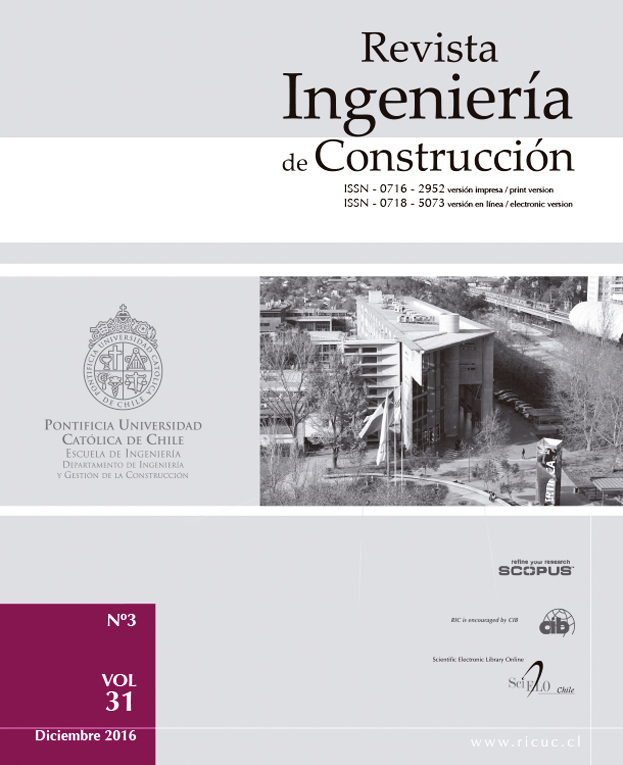Durability of FCC-blended mortar exposed to sodium and magnesium sulfate
DOI:
https://doi.org/10.4067/S0718-50732016000300004Keywords:
fluid catalytic cracking residue, chemical attack, sodium sulfate, magnesium sulfateAbstract
This paper presents a comparative analysis of the deterioration of mortars containing 10% and 20% of a fluid catalytic cracking residue (FCC) in the presence of sodium sulfate (Na2SO4) and magnesium sulfate (MgSO4) at 5% (concentration 50g/L). Cement without addition (reference cement), and blended with 10% metakaolin (Cem-10MK) and 10% silica fume (Cem-10SF) were used as reference materials. The longitudinal expansion and loss of compressive strength at 392 days of exposure were evaluated. Additionally, microstructural analysis was performed using X-ray diffraction (XRD) and scanning electron microscopy (SEM) to identify the generated products. The results indicate that the residual strength of mortars blended with 10% and 20% of FCC after 360 days of immersion in the Na2SO4 solution is 18.5% higher than the value reported by the standard mixture, and 55% and 39% higher with respect to that reported for the mixtures containing 10% MK and SF. Mortars containing 10% of FCC in the presence of Na2SO4 report a loss of resistance of approximately 10%, while in MgSO4 it was 38% lower than the values of other evaluated mixtures. In general, MgSO4 is a more aggressive solution than Na2SO4. Ettringite and gypsum were identified as products from the reaction with sulfates.


